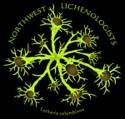Diploschistes muscorum is said to begin as a parasite of species of Cladonia. Other lichens which may also be parasitized (or overgrown?) by D. muscorum include species of Stereocaulon and Squamarina. Posting photo in which it seems to be parasitizing Lecidea tessellata. Red arrow indicates area which to me most appears to be replacement rather than overgrowing. (view original size) Perhaps this is commonly observed.
(Interesting that D. muscorum may begin by using a host’s photobiont, e.g. Trebouxia irregularis, and upon becoming independent switches to a different photobiont, e.g. Trebouxia showmanii.)
Really beautiful photos of Diploschistes muscorum parasitizing Cladonia posted by Amadej Trnkoczy:
https://www.flickr.com/photos/atrnkoczy/39142866980/
https://www.flickr.com/photos/atrnkoczy/39142864130/in/dateposted/

